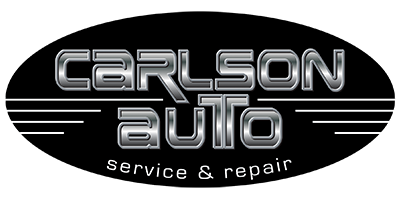
Read Our Blog
Windshield Wipers and Noticing Signs of an Issue
 Windshield wipers, often taken for granted, are a driver’s first line of defense against the elements. These inconspicuous blades play a crucial role in ensuring clear visibility during rain, snow, or even when dust and debris accumulate on the windshield. However, like all vehicle components, windshield wipers can deteriorate over time, posing a significant risk to your safety. Recognizing the signs of poor windshield wipers is essential to keep your travels safe and unobstructed.
Windshield wipers, often taken for granted, are a driver’s first line of defense against the elements. These inconspicuous blades play a crucial role in ensuring clear visibility during rain, snow, or even when dust and debris accumulate on the windshield. However, like all vehicle components, windshield wipers can deteriorate over time, posing a significant risk to your safety. Recognizing the signs of poor windshield wipers is essential to keep your travels safe and unobstructed.
Windshield wipers and noticing Issues
One of the most noticeable signs of failing wiper blades is streaking. When you activate your wipers, and they leave streaks or smears on the windshield, it’s a clear indicator that the rubber on the blades has deteriorated. Streaking can impair your vision and make driving hazardous, especially during heavy rainfall. To prevent such visibility issues, inspect your wiper blades regularly. If you see streaks or patches of water left behind, it’s time to replace them. New wiper blades will ensure a clear and unobstructed view of the road.
Noises they Make
Chattering and skipping are other common indicators of poor wiper performance. If your wipers make a chattering noise as they move across the windshield, it suggests that the blades are not making even contact with the glass. This can be both annoying and inefficient, compromising your wipers’ ability to clear away rain, snow, or debris effectively. Moreover, the prolonged use of chattering wipers can potentially damage the windshield itself, leading to costly repairs. If you notice your wipers chattering, don’t delay – replace them promptly to ensure they maintain optimal performance and prevent any collateral damage.
Squeaking Sounds
Squeaking is yet another sign of wiper blades in need of replacement. The squeaking noise occurs when the rubber on the blades becomes dry and hardened, reducing their effectiveness in clearing your windshield. Squeaking wipers can be a bothersome distraction during your drive, and they may even lead to further degradation of the wiper blades over time. To maintain a quieter and safer driving experience, replace squeaking wiper blades as soon as you hear the telltale sound.
In conclusion, while windshield wipers might seem like a minor vehicle component, they play a significant role in ensuring your safety on the road. By recognizing the signs of poor wipers – streaking, chattering, and squeaking – and promptly addressing these issues, you can ensure that your wipers remain in optimal condition. Regular maintenance of this often-overlooked aspect of your vehicle will help provide you with clear visibility, making your journeys safer and more enjoyable, no matter the weather conditions. Don’t wait until visibility becomes dangerously compromised; act now to ensure the reliability of your windshield wipers.
Inspecting Your Car This Fall: A Comprehensive Guide
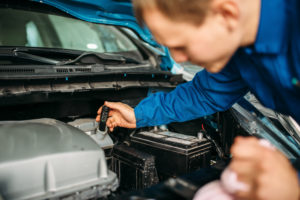
Inspecting your vehicle is always important. As the vibrant hues of summer gradually give way to the golden and crimson tones of autumn, it’s a signal that it’s time to prepare your vehicle for the challenges of the upcoming season. Fall presents a unique set of conditions, such as changing weather, falling leaves, and decreased daylight hours, which necessitate a thorough inspection of your car. By taking proactive steps now, you can ensure that your vehicle is in prime condition to handle whatever Mother Nature throws at it.
Inspecting your Car
- Check the Tires: Start your fall inspection by focusing on your vehicle’s tires. Ensure they have adequate tread depth and are properly inflated. As the roads can become slippery with falling leaves and occasional rain, having well-maintained tires is crucial for both safety and handling.
- Examine the Brakes: Properly functioning brakes are essential, especially during the slippery conditions that can occur in the fall. Have your brakes inspected for wear and tear and replace worn brake pads or discs as needed.
- Inspect the Lights: With the days getting shorter, it’s important to make sure all your lights are working correctly. Check the headlights, taillights, turn signals, and brake lights. Clean and replace bulbs as necessary to maintain good visibility.
- Monitor the Battery: Cold weather can put extra strain on your vehicle’s battery. Have it tested to ensure it has enough power to start the engine during the cooler months. If it’s old and weak, consider replacing it to avoid potential issues.
Other things the Check
- Change the Wiper Blades: Frequent rain and falling leaves can obstruct your view when driving in the fall. Make sure your wiper blades are in good condition and effectively clear your windshield. Replace them if they leave streaks or don’t clean properly.
- Inspect the Cooling System: As temperatures drop, your engine’s cooling system needs to be functioning optimally to prevent overheating and freezing. Check the coolant level and condition, and ensure the thermostat and radiator are in good working order.
- Clean and Inspect the HVAC System: As the weather turns colder, you’ll rely more on your car’s heating and defrosting systems. Have the HVAC system cleaned and inspected to ensure it works efficiently.
- Check the Oil and Fluids: Regular oil changes are essential for maintaining your engine’s health. Additionally, check other vital fluids like transmission fluid, power steering fluid, and brake fluid. Ensure all are at the correct levels and replace or top up as necessary.
- Inspect the Suspension and Steering: Fall’s changing road conditions require a stable and responsive suspension and steering system. Have these components inspected to ensure a smooth and safe ride.
- Keep an Emergency Kit: In case of unexpected incidents on the road, make sure your car is equipped with an emergency kit containing items like a flashlight, blankets, first-aid supplies, and non-perishable snacks.
By performing these fall car inspections and maintenance tasks, you can ensure your vehicle is ready to face the challenges of the season. It’s not only about safety but also about ensuring your car remains reliable and efficient. Preparing your vehicle for fall will give you peace of mind and make your journeys during this beautiful season more enjoyable.
Upgrading the Lights for your Vehicle to Improve your Visibility
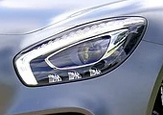 Upgrading the lights in your car can be a transformative and practical enhancement. It not only improves the aesthetics of your vehicle but also significantly contributes to safety and visibility, both during daytime and nighttime driving.
Upgrading the lights in your car can be a transformative and practical enhancement. It not only improves the aesthetics of your vehicle but also significantly contributes to safety and visibility, both during daytime and nighttime driving.
Upgrading the Lights
First and foremost, consider upgrading your car’s headlights. Traditional halogen bulbs are gradually being replaced by more advanced and energy-efficient options like LED (Light Emitting Diode) or HID (High-Intensity Discharge) headlights. LED headlights have gained popularity for their brilliant, white light output and extended lifespan. They provide superior illumination of the road ahead, enhancing visibility in various driving conditions. HID headlights emit a bright, bluish-white light that closely resembles natural daylight, reducing eye strain during nighttime drives. These upgrades not only make it easier for you to see the road clearly but also ensure that your vehicle is more visible to other drivers, contributing to overall road safety.
Checking the Brake Lights
Secondly, don’t overlook the importance of upgrading your taillights and brake lights. These lights play a critical role in communicating your intentions to other drivers on the road. Replacing standard incandescent bulbs with LED equivalents is a wise choice. LED lights illuminate more rapidly and are highly visible in various weather conditions, making your braking and turning signals more effective. Some LED taillights even offer dynamic features like sequential turn signals, not only improving safety but also adding a touch of style and modernity to your car’s rear end.
Remember the Interior Lights
Lastly, consider enhancing the interior and accent lighting of your car. LED interior lights are energy-efficient and available in various colors, allowing you to customize the ambiance of your vehicle’s cabin. Many modern vehicles come equipped with ambient lighting options that enable you to adjust the color and intensity of interior lighting to match your mood or preference. These upgrades not only enhance the aesthetics of your car’s interior but also create a more enjoyable and comfortable driving environment, especially during nighttime journeys.
Upgrading the lighting system in your car is a practical and visually appealing improvement that can significantly enhance safety, visibility, and the overall look of your vehicle. Whether you’re interested in brighter headlights for better nighttime driving, more efficient taillights for improved communication with other drivers, or adding interior and accent lighting for an enhanced driving experience, there are numerous options available to cater to your specific needs. Always ensure that any lighting modifications comply with local regulations to avoid legal issues, and consider consulting a professional for proper installation to maximize the benefits of these upgrades.
Fall Inspections are Important for Vehicle Care
 Fall inspections are important for the efficiency of your car. As the vibrant colors of summer give way to the golden hues of autumn, it’s an opportune time to prioritize a vehicle inspection this fall. While many associate vehicle inspections with the spring, the changing seasons make it equally vital to ensure your car is in optimal condition as we head into the colder months. Here are some compelling reasons why you should schedule a vehicle inspection this fall.
Fall inspections are important for the efficiency of your car. As the vibrant colors of summer give way to the golden hues of autumn, it’s an opportune time to prioritize a vehicle inspection this fall. While many associate vehicle inspections with the spring, the changing seasons make it equally vital to ensure your car is in optimal condition as we head into the colder months. Here are some compelling reasons why you should schedule a vehicle inspection this fall.
Fall inspections for your vehicle
Firstly, safety should always be the foremost concern when it comes to your vehicle. The fall season often ushers in unpredictable weather conditions, from rain-soaked roads to the potential for early frost in some regions. These factors can significantly impact driving conditions, making it crucial to ensure that essential safety components such as brakes, tires, lights, and wipers are in excellent working order. Worn brake pads or tires with insufficient tread can compromise your ability to stop safely on slippery surfaces, while properly functioning lights and wipers are indispensable for visibility, particularly as daylight hours grow shorter in the fall.
Getting Ready for the Winter
Secondly, preparing your vehicle for the colder weather ahead is essential. Lower temperatures can strain your vehicle’s systems, with the battery being especially susceptible. Cold weather can reduce a battery’s efficiency, making it more likely to fail when you need it most. A professional vehicle inspection can evaluate your battery’s health and the overall state of your charging system, allowing you to replace the battery proactively if required. This preventive measure can save you the frustration of dealing with a dead battery on a chilly fall morning.
Regular Maintenance
Lastly, a fall vehicle inspection is a proactive approach to maintenance that can ultimately save you both time and money. Addressing minor issues now can prevent them from snowballing into more significant and costly problems later on. Routine maintenance checks, including an oil change, can ensure that your vehicle operates efficiently and reliably throughout the fall and into the winter months. By taking these steps, you not only enhance your safety on the road but also extend the lifespan of your vehicle while reducing the risk of unexpected breakdowns during the colder season.
In conclusion, scheduling a vehicle inspection this fall is a wise and responsible choice. It prioritizes your safety, prepares your vehicle for the challenges of colder weather, and allows you to proactively manage maintenance needs. By taking action now, you can enjoy a worry-free driving experience as you navigate the seasonal changes in road conditions. Don’t wait until the first frost or heavy rain to consider your vehicle’s health. Schedule a fall inspection and drive into autumn with confidence in your vehicle’s performance.
Improving Mileage when Driving
 Improving your vehicle’s mileage not only helps you save on fuel costs but also contributes to a more sustainable and eco-friendly driving experience. Here are some practical tips to enhance your fuel efficiency and get more out of each gallon of gas.
Improving your vehicle’s mileage not only helps you save on fuel costs but also contributes to a more sustainable and eco-friendly driving experience. Here are some practical tips to enhance your fuel efficiency and get more out of each gallon of gas.
Improving Mileage
Firstly, adopting a smoother driving style can significantly impact your mileage. Avoid sudden accelerations and abrupt braking, as these actions waste fuel and strain your vehicle’s engine. Instead, practice gradual acceleration and gentle deceleration. Utilizing cruise control on highways helps maintain a consistent speed, preventing unnecessary fluctuations that can reduce fuel efficiency.
Follow Regular Maintenance
Secondly, regular maintenance is key to achieving optimal mileage. Keeping your vehicle in top condition by adhering to scheduled oil changes, air filter replacements, and tire maintenance can have a direct impact on how far you can travel on a tank of gas. Underinflated tires increase rolling resistance, making your engine work harder and using more fuel. Ensure your tires are properly inflated according to the manufacturer’s recommendations. Moreover, using the right grade of motor oil and maintaining a well-tuned engine can also contribute to improved fuel efficiency.
Reduce extra Weight in the Car
Lastly, minimizing excess weight and reducing drag can further enhance your mileage. Remove unnecessary items from your vehicle, especially those stored in the trunk or on the roof. Extra weight requires more energy to move, leading to increased fuel consumption. Additionally, roof racks and cargo carriers create aerodynamic drag, which can negatively impact fuel efficiency. If not in use, consider removing them to reduce wind resistance.
Incorporating these practices into your driving routine can lead to better mileage, not only saving you money but also reducing your carbon footprint. By driving smoothly, maintaining your vehicle, and optimizing its load and aerodynamics, you can contribute to a more fuel-efficient and eco-friendly journey on the road.
Visibility & Tips to Improve it When Driving
 Improving visibility while driving is crucial for safe and confident navigation on the road. Here are some essential tips to enhance visibility:
Improving visibility while driving is crucial for safe and confident navigation on the road. Here are some essential tips to enhance visibility:
Keeping a Clean Windshield
A clear line of sight starts with clean windows and mirrors. Dust, dirt, and debris can accumulate on your windshield and mirrors over time, obstructing your view and causing glare. Make it a habit to clean both the inside and outside surfaces of your windshield using a high-quality glass cleaner and a lint-free cloth. Additionally, ensure your side and rearview mirrors are clean and properly adjusted. Clean mirrors offer an unobstructed view, reducing blind spots and enhancing overall visibility.
Always check the Mirrors
Properly adjusted mirrors play a pivotal role in minimizing blind spots and expanding your field of view. Set your rearview mirror to capture the entire back window, providing a comprehensive view of the road behind you. Adjust your side mirrors to cover areas not visible in the rearview mirror, thus reducing the chances of missing vehicles in adjacent lanes. However, remember that mirrors can’t eliminate all blind spots; always perform quick shoulder checks before changing lanes to ensure complete awareness of your surroundings.
Headlights can Help with Visibility
Your vehicle’s headlights serve not only to illuminate the road but also to make your presence known to others. Use your headlights during low-light conditions such as dawn, dusk, or inclement weather. This not only helps you see the road better but also ensures that other drivers can see you. Ensure all your vehicle’s lights are working correctly, including brake lights and turn signals. Use high beams on open roads with no oncoming traffic to extend your field of vision, but switch to low beams when approaching other vehicles to prevent blinding their drivers.
Prioritizing visibility is an integral part of responsible driving. By consistently cleaning your windshield and mirrors, adjusting mirrors correctly, and using headlights wisely, you significantly improve your ability to navigate safely. These practices not only enhance your safety but also contribute to the safety of other motorists and pedestrians. Clear visibility empowers you to make informed driving decisions and enjoy a smoother, more secure journey on the road.
Noises to Be Aware of with your Vehicle
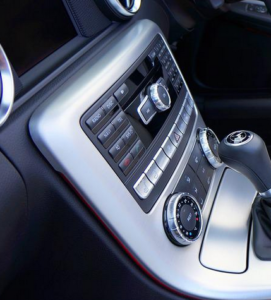 Noises can indicate an issue with your car. Understanding these different car noises can help drivers identify potential issues early on, ensuring proper maintenance and preventing costly repairs. Here are some common car noises and their potential meanings.
Noises can indicate an issue with your car. Understanding these different car noises can help drivers identify potential issues early on, ensuring proper maintenance and preventing costly repairs. Here are some common car noises and their potential meanings.
What the Noises mean
- Squealing or Screeching Brakes: If you hear a high-pitched squealing or screeching sound when applying the brakes, it usually indicates that the brake pads have worn down. Brake pads come with a metal indicator that creates this noise when they are nearly depleted. Ignoring this sound can lead to further damage, such as scoring the brake rotors, resulting in more expensive repairs. Replacing the brake pads promptly not only ensures safety but also helps maintain the overall health of the braking system.
- Clicking or Tapping from the Engine: A repetitive clicking or tapping sound from the engine could be a sign of low oil levels or inadequate oil pressure. Insufficient lubrication causes engine parts to rub against each other, creating this noise. It could also point to issues with the engine’s valves or lifters. Regularly checking oil levels and adhering to timely oil changes can prevent such problems and keep the engine running smoothly.
- Knocking or Banging from the Engine: A distinct knocking or banging noise from the engine may indicate a more serious problem, such as engine detonation or piston slap. Engine detonation occurs when the air-fuel mixture in the cylinder ignites prematurely, resulting in a knocking sound. On the other hand, piston slap is caused by excessive clearance between the piston and cylinder walls, leading to a slapping noise during engine operation. Both issues can cause significant engine damage if left unaddressed. Consulting a qualified mechanic is crucial to diagnose the problem accurately and prevent further harm.
- Grinding or Whining Sounds: Grinding noises may originate from various components such as the transmission, wheel bearings, or brakes. A worn-out clutch or transmission synchronizers can cause grinding when shifting gears. Additionally, failing wheel bearings or worn-out brake rotors can produce similar sounds. Whining noises can be attributed to issues with the power steering system, transmission, or differential. Identifying the source of the noise and seeking professional inspection and repair can prevent further damage and ensure a safe driving experience.
- Hissing or Sizzling Sounds: If you hear a hissing or sizzling sound from under the hood, it may suggest a coolant leak, leading to an overheated engine. Coolant leaks can occur due to damaged hoses, a faulty radiator, or a compromised cooling system. Addressing the issue promptly will help prevent engine damage and potential breakdowns.
Remember Maintenance
In conclusion, familiarizing yourself with the different noises your car makes can be invaluable for early problem detection and appropriate action. Squealing brakes, clicking engines, knocking sounds, grinding or whining noises, and hissing or sizzling sounds all signal specific issues that require attention. Regular maintenance checks and timely repairs by a qualified mechanic will ensure the overall health and longevity of your vehicle, contributing to a safe and enjoyable driving experience. Listening to your car and addressing any unusual noises promptly will save you time, money, and potential headaches down the road.
Summer Inspections for your Vehicle
 During summer, it’s important to prioritize vehicle inspections to ensure your car is in optimal condition for the warmer months. Regular inspections play a vital role in maintaining safety, reliability, and performance. Here are three key areas to focus on when inspecting your vehicle in the summer.
During summer, it’s important to prioritize vehicle inspections to ensure your car is in optimal condition for the warmer months. Regular inspections play a vital role in maintaining safety, reliability, and performance. Here are three key areas to focus on when inspecting your vehicle in the summer.
Checking the Cooling System
Firstly, check the cooling system. With rising temperatures, your vehicle’s cooling system becomes even more critical. Inspect the radiator for any signs of leaks or damage. Ensure the coolant level is sufficient and top it up if needed with the recommended coolant for your vehicle. Additionally, examine the radiator hoses for cracks, bulges, or other signs of wear. Replace any damaged hoses to prevent potential coolant leaks and overheating. It’s also important to verify that the cooling fan is operating properly, engaging when the engine reaches the appropriate temperature.
Inspecting the Tires in the Summer
Secondly, inspect the tires. Hot pavement and long drives during summer can take a toll on your tires. Check the tire pressure regularly, as high temperatures can cause it to increase. Consult your vehicle’s manual or the sticker on the driver’s side door jamb for the recommended tire pressure. Inspect the tread for signs of wear and ensure there are no bulges or cuts on the sidewalls. Utilize the “penny test” by inserting a penny into the tread grooves with Lincoln’s head upside down. If the top of Lincoln’s head is visible, it’s an indication that the tread is worn and replacement is necessary. Don’t forget to inspect the spare tire as well.
Lastly, pay attention to the battery and electrical system. Extreme temperatures can affect battery performance. Inspect the battery terminals for any corrosion and clean them if necessary. Test the battery voltage using a multimeter or have it checked by a professional. If your battery is more than three years old or shows signs of weakness, it may be time for a replacement. Additionally, check the electrical components of your vehicle, such as lights, signals, and air conditioning, to ensure they are functioning properly. Replace any burnt-out bulbs and ensure the air conditioning system is cooling effectively.
By conducting these inspections for your vehicle in the summer, you can address any potential issues before they escalate. Regular maintenance and inspections are key to maintaining safety, reliability, and performance. If you’re unsure about any aspect of the inspection, it’s always wise to consult a professional mechanic for a thorough evaluation. Prioritizing vehicle inspections will help you enjoy a worry-free and comfortable driving experience throughout the summer season.
Tire Inspections are Important
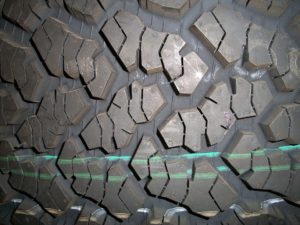 Having tire inspections done are an essential part of vehicle maintenance to ensure safety and optimal performance on the road. By inspecting your car’s tires regularly, you can identify potential issues and address them promptly. Here are three simple steps to help you inspect your tires effectively.
Having tire inspections done are an essential part of vehicle maintenance to ensure safety and optimal performance on the road. By inspecting your car’s tires regularly, you can identify potential issues and address them promptly. Here are three simple steps to help you inspect your tires effectively.
Looking for War and Damage
Firstly, visually examine each tire for any signs of damage or wear. Look for cuts, bulges, or cracks on the sidewalls, as they can indicate potential tire failures. Check for uneven wear patterns across the tire surface, which may suggest alignment or suspension issues. Additionally, make sure the tire tread is in good condition. Use a tread depth gauge or the “penny test” to measure the tread depth. Insert a penny into the tread grooves with Lincoln’s head upside down. If you can see the top of Lincoln’s head, it indicates that the tread is worn and the tire needs to be replaced.
Air Pressure during Tire Inspections
Secondly, check the tire pressure regularly. Proper tire inflation is crucial for safety, fuel efficiency, and tire longevity. Use a tire pressure gauge to measure the air pressure in each tire. Refer to your vehicle’s manual or the sticker on the driver’s side door jamb for the recommended tire pressure. If the pressure is too low, add air until it reaches the proper level. If it’s too high, release air until it matches the recommended pressure. It’s important to check the tire pressure when the tires are cold, as driving or exposure to heat can cause the pressure to increase and provide inaccurate readings.
Lastly, inspect the tire valves and valve stems. Ensure they are in good condition without any cracks or leaks. Faulty valves or stems can lead to slow leaks or sudden tire deflation. If you notice any issues, it’s advisable to have them replaced by a professional.
Remember, regular tire maintenance goes beyond inspection. Rotate your tires regularly to promote even wear and prolong their lifespan. Consider having your tires balanced and aligned periodically to ensure proper handling and a smooth ride.
By following these simple steps and conducting regular tire inspections, you can keep your tires in good condition, ensuring safety, optimal performance, and longevity. If you’re uncertain about the condition of your tires or notice any abnormalities, it’s always best to consult a professional for a thorough inspection. Proper tire care is vital for a safe and comfortable driving experience.
Air Conditioner Issues to Be Aware of
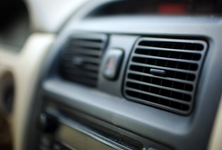 During the hot summer months, a functional air conditioner is crucial for a comfortable driving experience. If you notice that your car’s air conditioner isn’t performing as it should, it could be a sign of a faulty system. Here are some common signs to look out for.
During the hot summer months, a functional air conditioner is crucial for a comfortable driving experience. If you notice that your car’s air conditioner isn’t performing as it should, it could be a sign of a faulty system. Here are some common signs to look out for.
Air Conditioner blowing warm air?
Firstly, if your car’s air conditioner is blowing warm or hot air instead of cool air, it’s a clear indication that something is wrong. This could be due to a refrigerant leak, a malfunctioning compressor, or a clogged condenser. It’s essential to have the system inspected by a professional to identify the underlying issue and restore proper cooling.
Odd Noises you hear
Secondly, unusual noises coming from the air conditioning system can be a red flag. If you hear grinding, rattling, or squealing sounds when the ac is running, it could indicate a problem. These noises may be caused by a failing compressor, loose belts, or damaged components. Ignoring these sounds could lead to further damage and more expensive repairs down the line.
Lastly, reduced airflow from the vents is another sign of a bad ac. If you notice weak or diminished airflow, it could be due to a clogged air filter, a malfunctioning blower motor, or blocked air ducts. In some cases, electrical issues may also be to blame. Having the system inspected and serviced by a professional will help diagnose the root cause and restore proper airflow.
If you experience any of these signs, it’s crucial to have your car’s air conditioning system checked by a qualified technician. They have the expertise to diagnose and repair the issue. Regular maintenance and addressing problems early on can help prolong the lifespan of your air conditioner and ensure optimal performance when you need it most. Don’t let a faulty air conditioner ruin your driving experience—seek professional help and stay cool on the road.
Why choose
Carlson auto?
It is easy to schedule an appointment online. Choose a location below and complete the form. We will call you to confirm your appointment. Couldn’t be easier! See you soon.
Cottage Grove
8799 E Point Douglas Rd S
Monday-Thursday: 8AM-6PM
Friday: 8AM-5PM
Maplewood
651-578-0885
275 Century Ave N
Monday-Friday: 8AM-6PM





